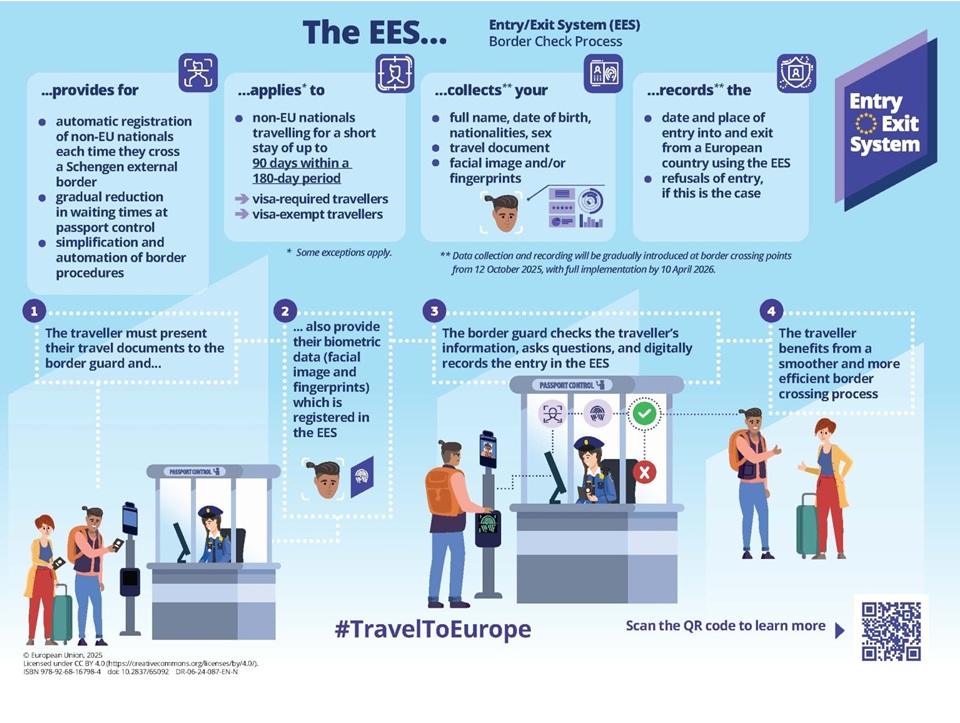The long-awaited implementation of the European Entry Exit System (EES) has finally started. From 12th October 2025 non-EU nationals travelling to 29 EU/Schengen states for short stays of up to 90 days are required to register their biometric information at their initial point of entry into the EU, including fingerprints and facial images. Travellers are also required to complete a short questionnaire about their purpose of travel and source of funds. EES is free of charge.
The European Entry Exit System (EES) is being phased in over a number of months until April 2026, so not all travellers are being registered on the EES system from October 12th, as not all border points are immediately operating the system. Even where they are, not all travellers are being directed to the EES pre-registration terminals and having their biometric data collected. By 10th April 2026 however, the European Commission expects the system to be fully operational throughout the EU, with all borders processing all passengers through EES, and collecting biometrics.
What does EES mean for sailors cruising to and returning from Europe in the immediate future, who will be expected to visit an official office or designated border crossing point? What are the implications for sailors (and other travellers) already in Europe who are planning to return to the UK shortly but will not have already submitted their biometric data on arrival in the EU prior to 12th October?
RATS understands that the first time a non-EU national arrives at a suitably equipped EU border after October 12th, they are required to provide biometric data, irrespective of whether they are entering to start their travels or exiting to return to their home country. Even where biometric data has been registered, passports will continue to be stamped - indeed, it’s advisable to insist on a stamp for the time being, in case discrepancies occur! When fully implemented passport stamping will, however, cease.
For entry to France at least, a number of ports (both ferry terminals and others) are already equipped with EES pre-registration equipment according to the French Ministry of the Interior: Pre-registration Devices for EES. French Customs officials have also confirmed to the CA, via the French Marina Federation (FFPP) and the CA’s Honorary Local Representative (HLR) in St Cast, that the National Protocol of Cooperation for non-PPFs (i.e. ports which are not official ports of entry) will continue during the "EES phase-in period". Detailed information on French ports on the Channel coast can be found on our news page here, which is regularly updated to reflect the current position as we understand it.
It is understood that mobile units or the Travel to Europe phone app developed by the EU will be the means by which EES pre-registration processes will eventually take place at all official ports of entry into Europe. As EES applies to both entry and exit from the EU, travellers (including sailors) will also have to be logged into the EES system in order to record their exit from the EU, but biometrics will not be collected again. Biometrics collected through the EES registration process will be retained for 3 years.

